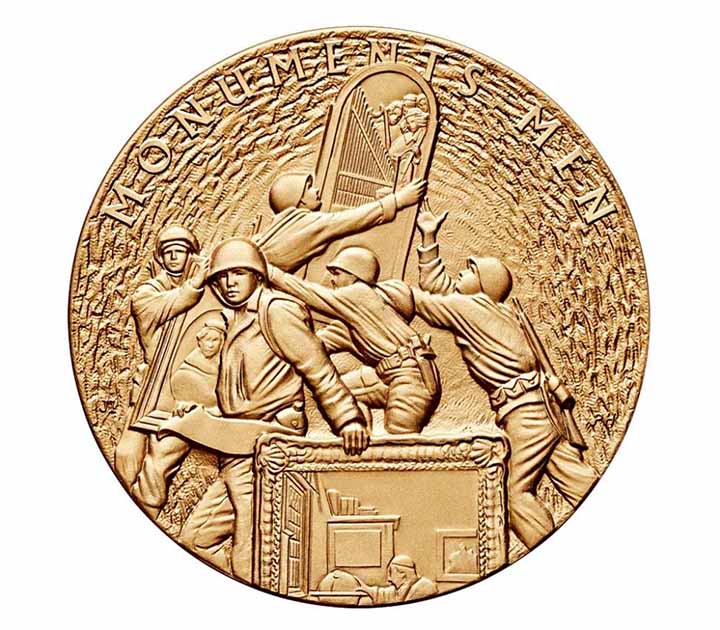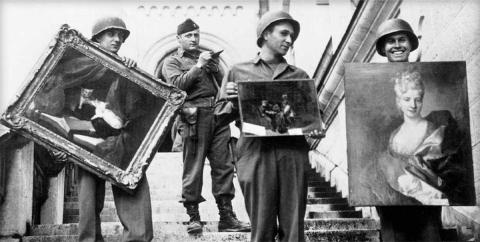For many, the first time they learned about the so-called ‘Monuments Men,’ was when the group’s story was dramatized in the 2014 film directed by George Clooney by the same name. Established in 1943 by the Allied forces, under the name the Monuments, Fine Arts, and Archives Section Unit (MFAA), this was an almost 400-strong group tasked by the then President of the United States, Franklin D. Roosevelt, with protecting, finding, and returning historic and cultural monuments from the ravages of World War II.
This marked the first time that an army prioritized reducing damage to cultural monuments and property. But it was also an understandable response to organized looting and destruction undertaken by the Nazis during the Holocaust. While engaged in the mass genocide against Jewish people and other targeted groups, the Nazis also ravaged libraries, synagogues, books, monuments, and cultural heritage. This was part of Adolf Hitler's scheme aimed at erasing the memory of Jewish identity, generating funds for their genocide, and supporting his Aryanist agenda. Aside from the theft and destruction of what Nazi’s defined as degenerate art, old masterpieces were plundered from art collectors, individuals, and cultural institutions all over Europe.

In 2014, the United States House of Representatives awarded the Monuments Men with the Congressional Gold Medal. (Public domain)
These cultural artifacts were also in danger due not only to ground warfare, but also aerial bombardment, which was used extensively by both the Allies (USA, UK, France, and others) and Axis (Germany and Japan) powers throughout World War II. This new technology posed a lethal threat to heritage throughout Europe, causing mass destruction to infrastructure and historic sites in a way that had not been seen before. With the onset of war, museums embarked on a massive evacuation of artwork, hiding masterpieces in undisclosed locations. The Louvre in Paris, for example, was left almost empty, its collection scattered in unassuming châteaux throughout the French countryside.
While most were driven by the panic of human casualties, the MFAA centered their attention on the works of art, artifacts, libraries, and monuments that were being swept up in the horror of war. Made up of mostly middle-aged scholars, including art historians, curators, and museum directors from 13 countries, the Monuments Men (and women) were experts in their field who collaborated with art professionals in Europe. From their base at the National Gallery of Art in Washington DC, they frantically created lists of cultural treasures and then joined the military on the ground to set out to locate and protect them.
At the frontlines, members of the MFAA supplied the allied forces with maps marking monuments and sites to be avoided by bombings. These passionate art lovers managed to track down over 1,000 stockpiles of important cultural treasures, including millions of artworks and artifacts which had either been stolen by the Nazi’s or hidden for safekeeping.

Monuments Men pose with Leonardo da Vinci’s Lady with an Ermine upon its return to Poland in April 1946. (Public domain)
The Monuments Men uncovered gold, paintings, and the personal belongings of Nazi concentration camp victims within the Kaiserode mine in Merkers, Germany. Within the country home of Hans Frank—the Governor General of Poland remembered for making the mass murder of Jewish people a deliberate policy—the MFAA tracked down Leonardo da Vinci’s Lady with an Ermine.
Find out more about the adventures of the Monuments Men and Women in the article ‘History Heroes: WWII's Monuments Men and Women and the Greatest Treasure Hunt in History,’ available in the January - February 2024 issue of Ancient Origins Magazine. Get it here!
Featured Image: MFAA Officer James J. Rorimer supervises U.S. soldiers recovering looted paintings from Neuschwanstein Castle in Germany. Source: Public domain
By Cecilia Bogaard




